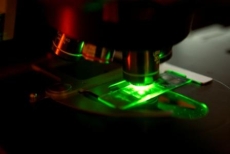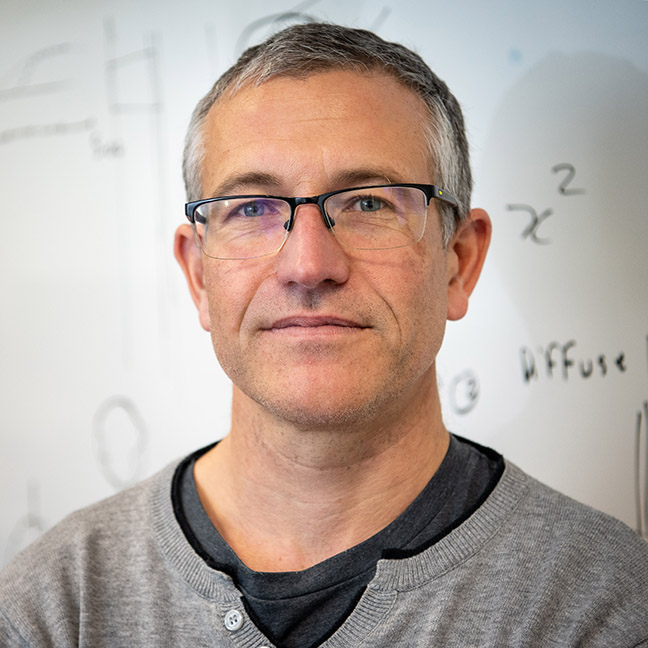Research projects
We use optical spectroscopy as advanced characterisation tools for nanotechnologies in chemistry, biochemistry, materials science, and physics. A large part of our research is aimed at understanding and improving these spectroscopy tools, in particular surface-enhanced Raman spectroscopy (SERS) and scattering-independent absorption spectroscopy in integrating spheres.
Theoretical work in electromagnetic theory, electromagnetic modeling, computational electromagnetics, plasmonics, and ray-tracing is carried out in parallel and often support the experimental spectroscopy work.

Current research activities
Fundamental studies of SERS and single-molecule SERS
SERS is a technique which enhances the Raman scattering effect by observing molecules after their adsorption onto metallic (silver and gold) nanostructures. The enhancement can large enough to allow single molecules to be detected.
This technique was discovered more than 30 years ago and has been studied extensively, but the mechanisms responsible for the effect are still debated.
We design and carry out SERS experiments to probe these mechanisms and seek to answer key outstanding questions, such as: what are the origins of SERS resonances, what is the SERS cross section of a single molecule, can SERS result in optical pumping of vibrations?
Plasmonics
SERS relies on the excitation of sub-wavelength metallic surface structures, in particular gold and silver colloids. The resulting plasmon resonances vary according to the optical properties of the substrate and have many potential applications in sub-wavelength optics. We use SERS to examine these ‘plasmon structures’ to develop theory as well as studying the plasmon resonances themselves.
Optical spectroscopy in integrating spheres
Integrating spheres are fascinating non-conventional optical components. They can be used in diverse contexts, including for scattering-independent absorption spectroscopy, a technique that we have continuously developed and improved over the last five years. We are still working actively on new theoretical and experimental developments in this area.
Electromagnetic theory and modeling
We use and develop advanced numerical tools for the modeling on plasmonic nanostructures. These include semi-analytical methods such as Mie theory for spheres and its extensions to shells and multiple spheres, T-matrix methods for non-spherical particles, and surface-integral equation and finite element methods for more complex geometries.
Fundamental questions of electromagnetic theory are also investigated, for example the validity of the Rayleigh hypothesis. Advances in these techniques can often be applied to other fields, for example to calculate the optical properties of atmospheric aerosols in the context of climate models.
Publications
Check out the full publication list.
Available research projects
Research projects on the following topics are available on a regular basis:
- Surface enhanced Raman scattering (SERS) of single molecules
- Plasmonics (theory and experimental)
- Optical spectroscopy in integrating spheres
- Electromagnetic theory and modeling.
For more information, contact Eric Le Ru or Auguié Baptiste:
Professor of Physics
Senior Lecturer in Physics
School of Chemical and Physical Sciences
Research collaborations
Our group has strong links with:
- the ITODYS laboratory in University Paris Diderot (France)
- Imperial College in London (UK)
- the centro atomico Bariloche (Argentina)
- the Nanophotonics and Metrology (NAM) lab in EPFL (Switzerland).


